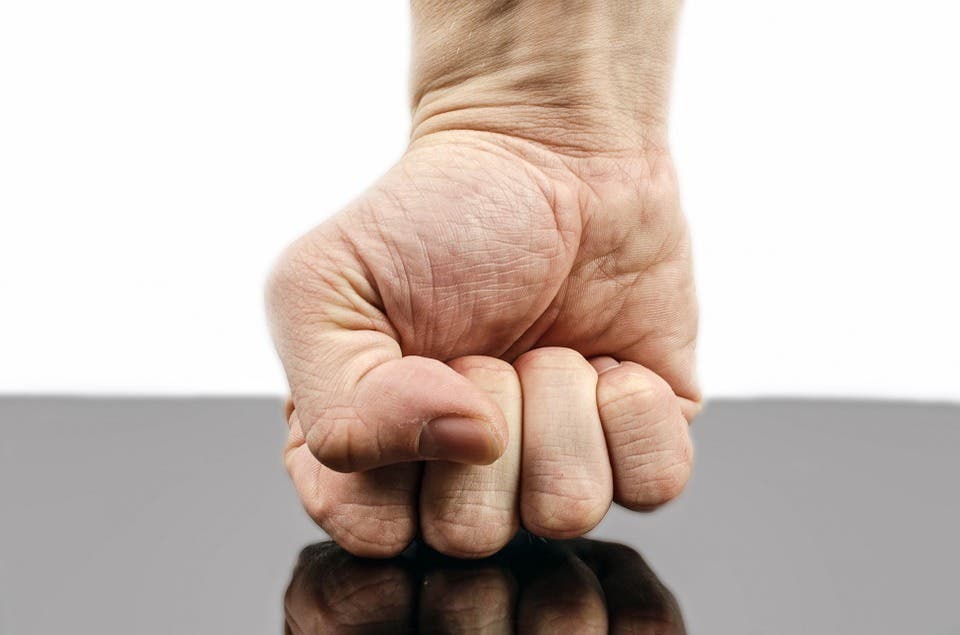New research shows that one area of the brain is key in deciding whether to take revenge or not.

Anger breeds revenge — but what stops it? New research looking into how the brain reacts to perceived injustice shows that resisting the urge to take revenge requires heavy brain activation.
Don’t get mad, get even
A team of researchers from the University of Geneva (UNIGE), Switzerland, used an economic game of their own design for the study. The game, christened the Inequality Game, was specifically designed to trigger feelings of injustice and anger in the participants, before offering them a chance at ‘revenge’.
The Inequality Game pits each participant against one fair and one unfair player in an economic setting. The twenty-five participants that took part in the game had to handle fair behavior from one player, and unfair behavior (and provocation) from the other. Each player’s behavior was pre-programmed, but participants weren’t told they were playing against a computer.
“The participant has economic interactions with two players, whose behaviour is actually pre-programmed — which he doesn’t know about,” explains Olga Klimecki-Lenz, paper co-author and the game’s developer.
“One is friendly, offers the participant only mutually beneficial financial interactions and sends nice messages, while the other player makes sure to multiply only his own profits, going against the participant’s interest and sending annoying messages.”
The game had three phases, during which participants were installed in a magnetic resonance imaging (MRI) scanner so the team could keep tabs on their brain activity. Afterward, the participants were shown photographs of the two players, the messages they sent, and the financial transactions each received and issued.
In the first phase, participants are in complete control and choose how to split profits among the players. On average, participants were “fair towards both other players” in this phase, said Klimecki-Lenz.
The second phase saw the first provocations. Each participant passively receives the decisions of the other players and is exposed to provocation and unfair behavior from one of the players. During this phase, participants were asked to rate their feelings of anger on a scale from 0 to 10.
“It was during this phase that we were able to identify which areas were related to feelings of anger,” Olga adds.
During the last phase, the participant is again placed in a position of power and has the chance to take revenge or not by penalizing the other players. Overall, participants remained nice to the fair player. They did, however, take revenge for the injustices committed by the unfair player.
The MRI scans taken during the second phase showed brain activation in the superior temporal lobe and the amygdala when participants were shown pictures of the other players. The amygdala is known to play a role in the feeling of fear and in processing the relevance of emotions. Furthermore, higher self-reported feelings of anger strongly correlated with more activity in these areas.
“But the Inequality game allowed us above all to identify the crucial role of the dorsolateral prefrontal cortex (DLPFC), a zone which is key for the regulation of emotions and which is located at the front of the brain,” Klimecki-Lenz explains.
On average, participants chose to take revenge on the unfair player when given the chance. However, 11 participants decided to remain fair to the unfair player — thus resisting the urge to take revenge.
The team says this comes down to activation in the DLPFC during the provocation phase; the greater the activation, the less punishment participants inflicted on the unfair player. All of the 11 participants showed greater activation in this area compared to the other participants. Low DLPFC activity was associated with harsher revenge inflicted on the player.
“We observed that DLPFC is coordinated with the motor cortex that directs the hand that makes the choice of vengeful behavior or not,” Olga concludes. “There is therefore a direct correlation between brain activity in DLPFC, known for emotional regulation, and behavioural choices.”
This is the first time that the DLPFC has been shown to play a role in revenge. The research suggests that increasing activity in the DLPFC through transmagnetic stimulation could inhibit or even suppress vengeful behavior, the team writes.
The paper “Distinct Brain Areas involved in Anger versus Punishment during Social Interactions” has been published in the journal Scientific Reports.






